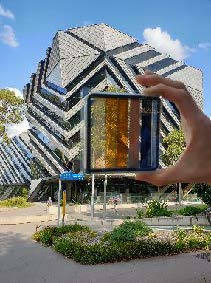Windows will soon generate electricity – solar cell breakthrough!
Australian scientists have discovered that semi-transparent solar cells that can be incorporated into window glass could have remarkable transformation in architecture, urban planning and electricity planning. Viridian Glass is proud to be assisting them to further their research.
A team of Australian researchers led by Professor Jacek Jasieniak from the ARC Centre of Excellence in Exciton Science and Monash University – have succeeded in producing next-gen perovskite solar cells that generate electricity while allowing light to pass through.
The team are now investigating how the new technology could be built into commercial products – and here at Viridian Glass we are proud to support their research to help move this research into commercially applicable environments.
This technology will transform windows into active power generators, potentially revolutionising building design. Two square metres of solar window, the researchers say, will generate about as much electricity as a standard rooftop solar panel.
The idea of semi-transparent solar cells is not new, but previous designs have failed because they were very expensive, unstable or inefficient.

A semi-transparent perovskite solar cell with
contrasting levels of light transparency.
Credits: Dr Jae Choul Yu
Professor Jasieniak and colleagues from Monash’s Materials Science and Engineering Department and Australia’s national science agency, CSIRO, used a different approach. They used an organic semiconductor that can be made into a polymer and used it to replace a commonly used solar cell component (known as Spiro-OMeTAD), which shows very low stability because it develops an unhelpful watery coating. The substitute produced astonishing results.
Co-author and CSIRO research scientist, Dr Anthony Chesman, said the team is now working on scaling up the manufacturing process, “We’ll be looking to develop a large-scale glass manufacturing process that can be easily transferred to industry so manufacturers can readily uptake the technology,” he said.
Viridian Glass Operations Mananger, Jatin Khanna, added: “The development of such solar windows presents an opportunity that could translate into the new glass innovations and technologies going forward.”
“As to when the first commercial semi-transparent solar cells will be on the market, “that will depend on how successful scaling of the technology will be, but we are aiming to get there within 10 years,” said Professor Jasieniak.
We are proud to support this important research. Read the full media release with further details on the research team and their paper here.
